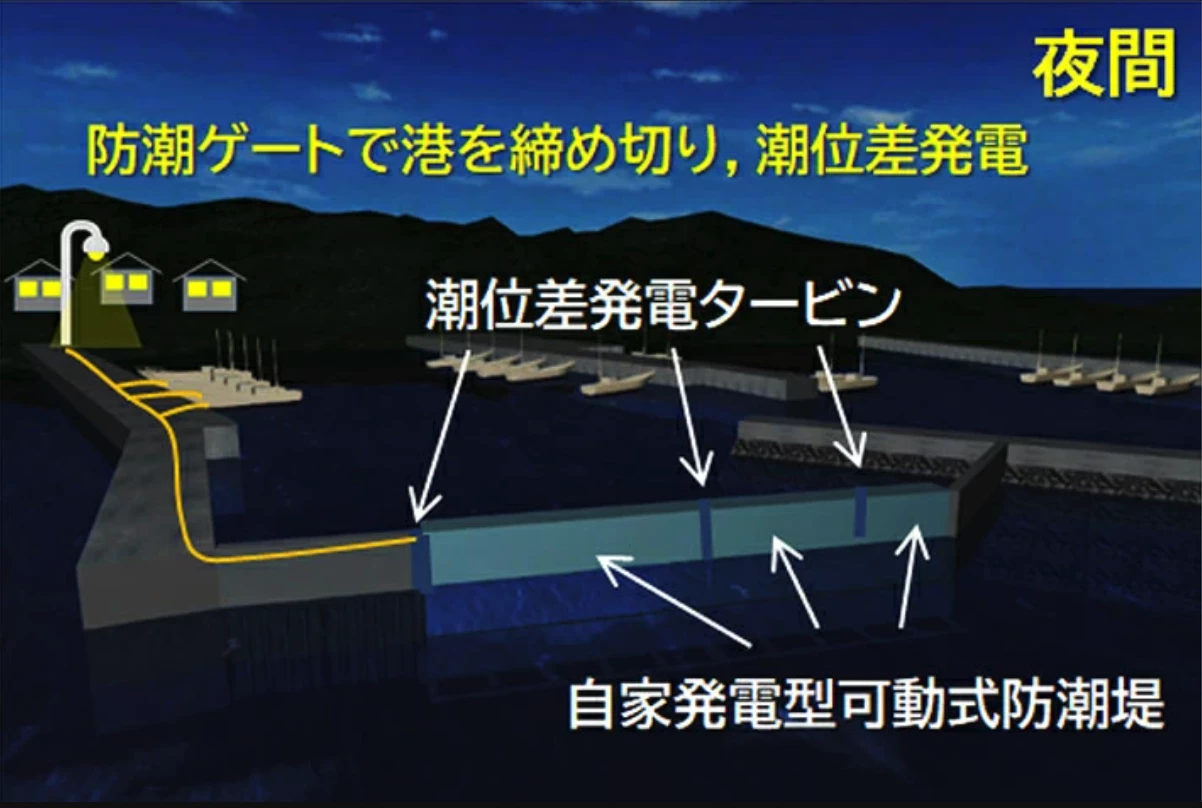Self-deploying sea barriers offer coastal towns some protection from the destructive forces of tsunamis – but one problem can arise when power goes out in a disaster scenario. Hence this Japanese proposal for a wall that generates its own power.
There are only around two tsunamis a year worldwide that cause death or damage, according to the US Tsunami Warning System. Larger ones capable of causing death or damage more than 1,000 km (620 miles) from their point of origin happen at a rate around two per decade.
But they're one of the most powerful destructive forces on the planet, and for areas like Japan, which experiences a disproportionate 20% of the world's Tsunamis, they're a constantly looming threat, appearing at short notice to level buildings, destroy property and capsize ships.
One way to stop, or at least potentially mitigate the damage comes in the form of large barriers buried in the sea floor around ports, great big buoyant gates which can be raised up quickly out of the sea bed when disaster looms. But what about getting them back down again, to re-open a port that may have lost power during the disaster?
That's the specific problem that researchers from the Tokyo Institute of Technology have attempted to solve in a new study, which proposes several short, movable seawalls per port, with about a foot (30 cm) of clear space between them.

In these gaps will sit a number of small microtidal generator turbines, capable of generating more than enough power to run the winches needed to retract the seawalls back down into the sea bed and re-open the port.
Thus, they generate the power needed to run themselves – and when there's no tsunami about, they can also generate up to 1,000 kWh of clean energy per tidal shift for use in the local area. They won't be universally useful; the researchers assessed some 56 Japanese ports and found only 23 of these would generate enough power to winch themselves back down.
Which does raise the question; why not make them non-buoyant, and use abundant power from the grid to lift them up to full height before the big waves hit, allowing gravity to retract them afterwards with the potential of harvesting back some of that energy?
Still, some ports, like Fukuyama and Himeji, show great potential for generating surplus energy, which could be used by the major industrial hubs nearby.
"To our knowledge, there is yet no system in the world that uses movable seawalls to generate electricity and then uses that electricity to operate the system itself. In this sense, [it] is a completely new concept," said Prof. Hiroshi Takagi, team lead on the project. "If the technology of the proposed movable tsunami barrier, under the harsh disaster conditions in Japan, can be firmly established through this research, there is no doubt that a day will come when this technology can be exported and deployed overseas as a groundbreaking disaster prevention technology."
Source: Tokyo Institute of Technology





